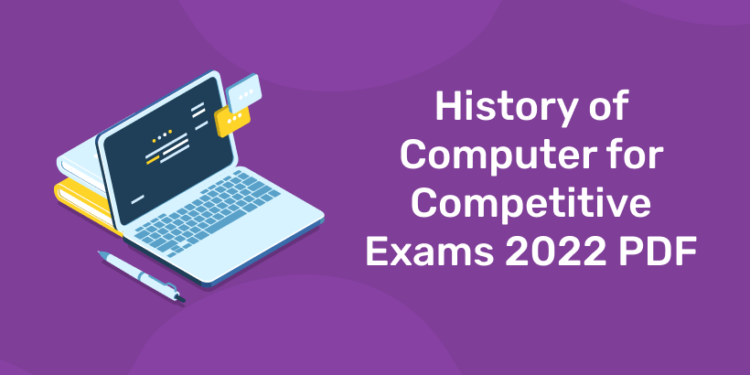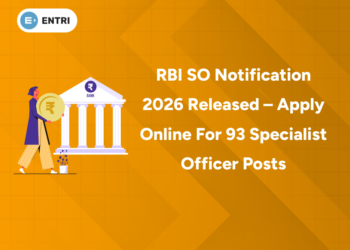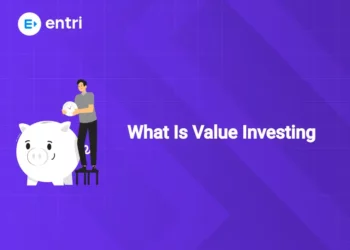Table of Contents
Who doesn’t know what a Computer is in this era right! But does everyone know who invented it? What is the history behind the invention? How did they develop the electronics we use today? Not many know the answers for these questions. Don’t worry, we are here with the answers for your questions. Did you know that long back people computing or doing any calculations were called a computer? Fascinating right. No wonder why humans are referred to as computers with brains. Government exams nowadays involve a General paper for Computer Awareness. It is very simple to crack this paper if you know how a computer works and of course if you know how to use it. If you don’t have an idea about the functioning of a computer, do not panic because you will, after completing this article.Let’s dig deep!
Take Free Mock Test on Entri App Today!
History of Computers – Introduction
A computer is an electronic device that manipulates information, or data and which has the ability to store, retrieve, and process data. Before learning all the complex terms, one must know about the history of computers. An analytical engine was designed by Charles Babbage, known as the father of computers. From then on the computers have evolved over the years. Currently we use the fifth generation of computers.
|
GENERATION |
YEAR |
DETAILS |
| First Generation | 1946 to 1959 |
|
| Second Generation | 1959-1965 |
|
| Third Generation | 1965 to 1971 |
|
| Fourth Generation | 1971 to 1980 |
|
| Fifth Generation | Present |
|
Most of us might have heard or learned Abacus. Abacus can be considered as the first digital computing device. The introduction of electric power in the 19th century led to the rise of electrical and hybrid electro-mechanical devices to carry out both digital and analog calculation. Lets learn the history in detail.
Analog Computers
1: What does the acronym "ATM" stand for in banking?
- first modern analog computer- tide-predicting machine -invented by Sir William Thomson in 1872.
- differential analyser to solve differential equations using wheel-and-disc mechanisms, conceptualized in 1876 by James Thomson.
- reached zenith with the differential analyzer by H. L. Hazen and Vannevar Bush at MIT in 1927.
- 1950s, digital electronic computers brought the end for analog computing machines,
Enroll in Kerala's Top-rated Bank Coaching Program!
Are you ready to take your banking career aspirations to new heights? Join Entri App's Bank Exam Coaching program to kickstart your preparations!
Join Now!Digital Computers
- 1938 – the United States Navy developed an electromechanical analog computer
- Torpedo Data Computer, used trigonometry to solve the problem of firing at a moving target.
- During World War II similar devices were developed
- In 1941, Zuse Z3, the world’s first working electromechanical programmable, fully automatic digital computer.
Vacuum Tubes and Digital Electronic Circuits
- Tommy Flowers, 1930 – electronics for the telephone exchange.
- telephone exchange network into an electronic data processing system, using vacuum tubes.
- In the US, John Vincent Atanasoff and Clifford E. Berry of Iowa State – Atanasoff–Berry Computer (ABC) in 1942,the first “automatic electronic digital computer”.
- Colossus, the first electronic digital programmable computing device, was used to break German ciphers during World War II.
- World’s first electronic digital programmable computer.
- ENIAC was the first electronic, Turing-complete device.
- lasted from 1943 to 1945.
Modern Computers
- The principle of the modern computer was proposed by Alan Turing in his seminal 1936
- Universal Computing machineStored programs
Enroll in Kerala's Top-rated Bank Coaching Program!
Are you ready to take your banking career aspirations to new heights? Join Entri App's Bank Exam Coaching program to kickstart your preparations!
Join Now!Stored-Program Computer
- The theoretical basis laid by Alan Turing in his 1936 paper. In 1945,
- The Manchester – world’s first stored-program computer. by Frederic C. Williams, Tom Kilburn and Geoff Tootill, 1948.
- Ferranti Mark 1, the world’s first commercially available general-purpose computer, February 1951.
- LEO I, April 1951, world’s first regular routine office computer job.
Transistors
- Proposed by Julius Edgar Lilienfeld in 1925. John Bardeen and Walter Brattain built the first working transistor
- Point-contact transistor, in 1947
- Shockley’s bipolar junction transistor in 1948.
- 1955 onwards, transistors replaced vacuum tubes in computer designs.
- First transistorised computer and the first in the world, was operational by 1953.
- MOSFET invented by Mohamed M. Atalla and Dawon Kahng
- The fundamental building block of digital electronics.
Integrated Circuits
- Kilby invented a hybrid integrated circuit.
- Noyce’s invention – first true monolithic IC chip.
- first silicon-gate MOS IC with self-aligned gates – by Federico Faggin in 1968.
- led to the invention of the microprocessor
- first single-chip microprocessor was the Intel 4004,by Federico Faggin
Mobile Computers
- First laptops, such as the Grid Compass, incorporating batteries – in the 2000s.
- cellular mobile phones by the early 2000s.
- dominant computing device on the market
- powered by System on a Chip (SoCs)
With the invention of solid-state electronics, transistors and integrated circuits, computers have become much smaller and affordable for consumers. Computers are present in every aspect of life today.
Learn Fundamentals of Computer – Study Notes for Bank Exams 2022
Basic Components
Apart from these elements, a computer system comprises three basic components or which are also called the building blocks of the system. They are :
- Input unit
- Central processing unit
- Output unit
Input Unit
- The input components help to enter data and commands into a system.
- Data can be any numbers, words, commands, etc.
- Provide commands and data and the computer uses CPU to process it and give the output.
Central Processing Unit or CPU
The computer needs to process the information provided by the input and create output. THis is done with the help of a component called the central processing unit. The CPU further uses these three elements:
- Memory Unit – Memory unit stores the data provided by the input component until the CPU starts processing the data. It also helps in transmitting the stored data to the CPU.
- Arithmetic and Logic Unit – the part performs arithmetic operations like mathematical calculations and logical functions.
- Control Unit – the control unit coordinates tasks between all components of a computer system. It does the job of collecting data from input and sending it to processing units and also transmits processed data to output units.
Output Unit
The final component is the output unit. After the data is processed, it is then converted into a format which people can recognise and understand. Output unit displays it to the user. Now if you think you will know which are the output units. They will be your monitors, screens, printers, speakers, etc.
Important Computer Terminologies for Competitive Exams PDF
Computer Hardware and Software
All the internal parts of a computer including the CPU, Monitor, Graphic Card, keyboard mouse, etc which creates the physical structure of the computer is called its hardware. The hardware is signalled or directed by the software to run or execute any command. Software whereas is a set of instructions, datas, program or command provided to the hardware to execute it.
Computer Hardware and Software Questions and Answers
In this world of evolving technologies, usage of electronics has become a necessity whether it be a child, teen, adult or senior citizen. The world of technology has changed the perspective of the world. Therefore it is very necessary to learn and grow with the innovations. A general knowledge about computers is a necessity for a human today. Let it be to make a call, to draft an email or to apply and attend exams.









